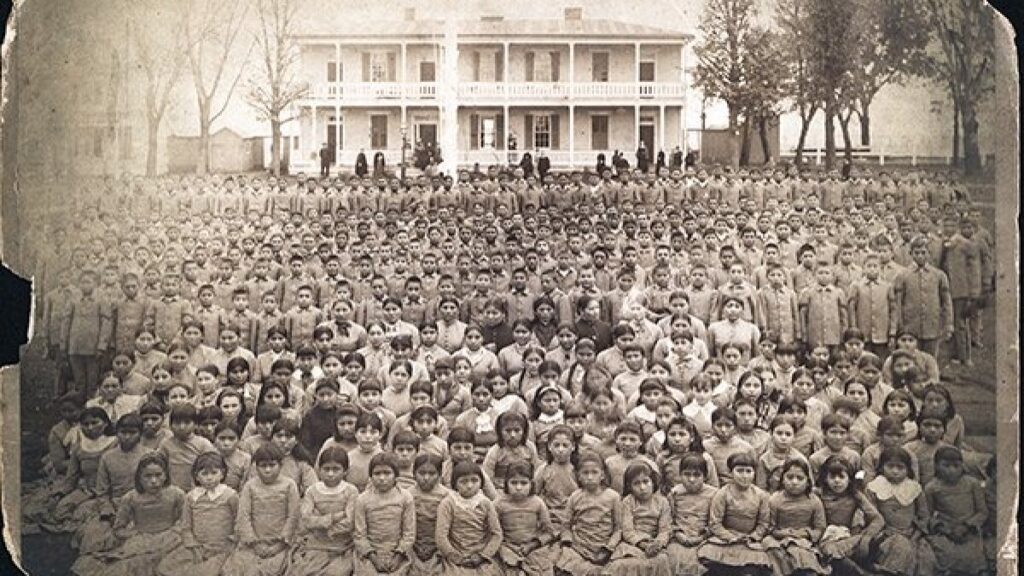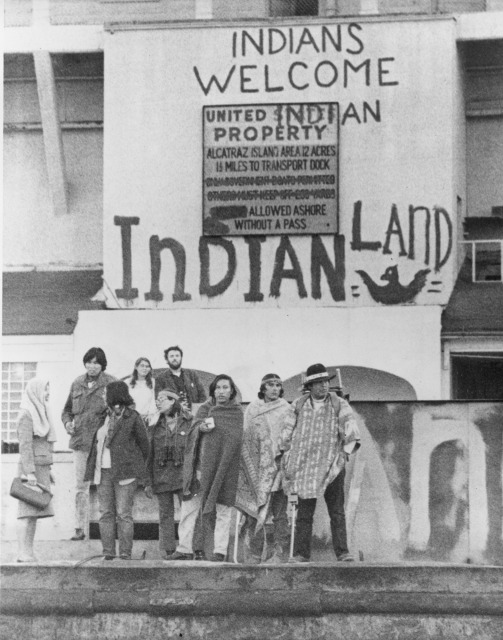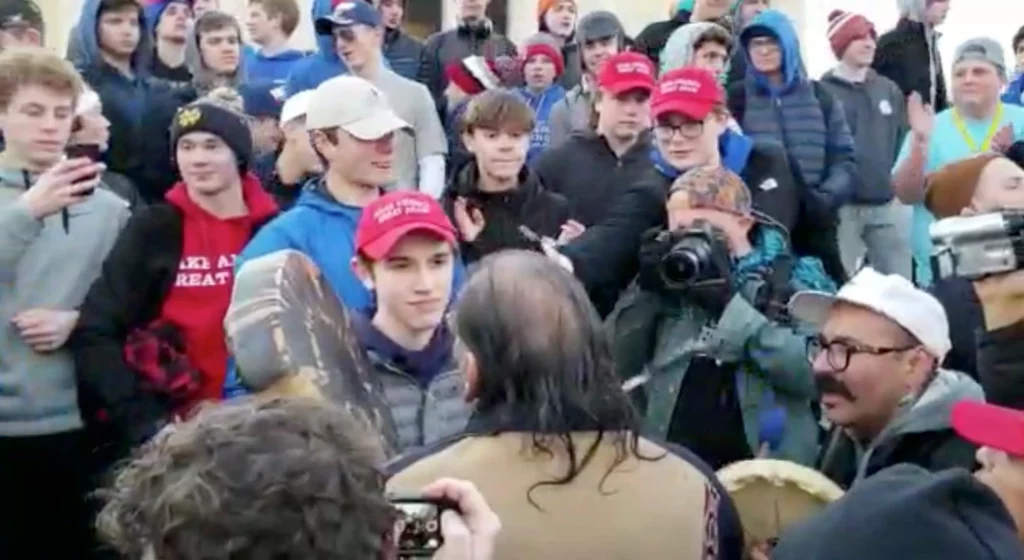The Four Atrocities Perpetrated on the Native Americans
The Four Atrocities
The Native Americans have been wholly discriminated against in every aspect of their lives by those in power. The powerful are motivated by power, land, and resources which add to their wealth. Money and power were the motivations behind every discriminatory action perpetrated against the Native Americans. Unfortunately, the people with the most money are often in position to control members of government. People with money want more money, and they will influence politicians to generate laws to protect their interests. Whether the these discriminatory actions were taken by the state or federal government, military, political, business, or religious leaders, it really doesn’t matter. To fully understand the epic proportions of these atrocities, we have created four categories into which they fall:
Extermination Order: The Extermination Order refers to the systemic violence and forced removal of Native American communities from their ancestral lands. This policy, often driven by government and military actions, led to the loss of countless lives and the decimation of numerous tribes. This brutal approach aimed at eradicating Native American populations and forcibly relocating them to reservations.
Read more about The Stand to Preserve the Native American Indigenous Spiritual Culture

The Extermination Order was not a singular, specific order but rather a term that is sometimes used to describe the various actions and policies that resulted in the forced removal and loss of Native American lives during the westward expansion of the United States. It’s important to note that this term is often associated with the 19th century and the Indian Removal era. Here are some key details about the Extermination Order in this context:
-
- Forced Removal: The primary aspect of the Extermination Order was the forced removal of Native American tribes from their ancestral lands. This involved the displacement of numerous tribes, including the Cherokee, Choctaw, Chickasaw, Creek, and Seminole, among others, from their homelands to the west of the Mississippi River. This removal was carried out through a series of treaties, the most infamous being the Indian Removal Act of 1830.
- Loss of Lives: The forced removal of Native Americans often resulted in the loss of many lives due to harsh conditions, lack of resources, and conflicts with settlers and the U.S. military. The most well-known tragedy associated with this is the Trail of Tears, which led to the deaths of thousands of Cherokee people due to exposure, disease, and starvation.
- Broken Promises: Many promises were made to Native American tribes regarding their lands, rights, and autonomy. However, these promises were frequently broken, leading to the loss of tribal territories and the degradation of their sovereignty.
- Destruction of Communities: The forced removal and relocation of Native American tribes disrupted their communities and traditional ways of life. Families and entire tribes were torn apart, and many cultural practices and traditions were lost or severely impacted. This practice continued well into the send half of the 20th
While there isn’t a single document known as the “Extermination Order,” the term encompasses a range of actions and policies that resulted in the suffering, displacement, and loss of life of Native American peoples during this period of American history.
Cultural Genocide: Cultural genocide involved a deliberate effort to suppress and undermine the cultural practices, languages, and traditions of Native American tribes. This was achieved through policies such as the forced assimilation of Native American children into boarding schools, where they were stripped of their cultural identity and language. The goal was to eradicate the distinct cultural heritage of Native American communities.

- Forced Assimilation Policies:
- The U.S. government implemented policies like the Indian Boarding School system, which forcibly removed Native American children from their families and communities.
- These schools aimed to assimilate Native American children into mainstream American culture by suppressing their languages, traditional clothing, and customs.
- Suppression of Native Languages:
- One of the most effective means of eroding culture was the suppression of indigenous languages. Native American children were often punished for speaking their native languages in boarding schools.
- As a result, many indigenous languages faced endangerment, with some becoming extinct, making it challenging to pass down cultural knowledge and stories.
- Destruction of Cultural Practices:
- Native American cultural practices, including traditional ceremonies, rituals, and dances, were discouraged or banned in boarding schools and reservations.
- This suppression disrupted the transmission of cultural knowledge from one generation to the next, leading to a loss of cultural identity.
- Interference with Religious Beliefs:
- Native American spiritual and religious beliefs were targeted by government policies and Christian missionary efforts.
- Practices integral to indigenous cultures, such as the Sun Dance and the use of peyote in Native American Church ceremonies, were suppressed, which threatened cultural continuity.
- Family Disruption:
- The forced removal of children from their families and communities created a rupture in the transmission of cultural knowledge.
- Families were often scattered and separated, making it challenging to maintain cultural traditions and values.
- Loss of Traditional Knowledge:
- Indigenous knowledge of land management, natural resources, and sustainable practices was undermined by cultural genocide.
- This loss of traditional ecological knowledge had negative environmental and cultural consequences.
- Legacy and Ongoing Reconciliation:
- The legacy of cultural genocide continues to affect Native American communities. They grapple with the loss of languages, cultural practices, and the traumatic experiences endured by their ancestors.
- Ongoing efforts for justice, cultural preservation, and reconciliation aim to address these historical injustices and revitalize Native American cultures.
Violation of Civil Liberties: Native Americans experienced severe violations of their civil liberties, including the denial of basic rights, land theft, and loss of autonomy. The imposition of treaties and policies that were often broken, such as the Trail of Tears, exemplified these gross injustices, resulting in the displacement and suffering of indigenous peoples.

- Treaty Violations:
- Overview: Treaties were often negotiated between the government and Native American tribes to define the rights and land ownership of indigenous peoples.
- Violations: Many of these treaties were repeatedly broken, altered, or ignored by the federal and state governments, leading to the loss of tribal lands and resources.
- Land Displacement:
- Overview: Native American tribes were forcibly removed from their ancestral lands and relocated to reservations, disrupting their communities and traditional ways of life.
- Violations: This practice was often brutal and resulted in the loss of land, resources, and cultural ties to their homelands.
- Denial of Sovereignty:
- Overview: Native American tribes had their sovereignty and self-governance undermined by the U.S. government, limiting their ability to make decisions about their own affairs.
- Violations: The U.S. imposed external governance structures on tribes, often without their consent, leading to a loss of autonomy.
- Forced Assimilation:
- Overview: Policies like the Indian Boarding School system were aimed at assimilating Native American children into mainstream American culture, often through harsh and punitive methods.
- Violations: This resulted in the suppression of indigenous languages, cultures, and traditions, and had a lasting impact on Native American identity
- Discriminatory Legislation:
- Overview: Numerous laws, such as the Dawes Act and the Indian Reorganization Act, were passed, often with the intent of assimilating or controlling Native American communities.
- Violations: These laws had detrimental effects, including the division of tribal lands and the erosion of tribal governments.
- Violence and Conflicts:
- Overview: Native American communities often faced violence and conflicts with settlers and the U.S. military, further infringing on their civil liberties.
- Violations: These confrontations resulted in the loss of lives, displacement, and the erosion of security for indigenous peoples.
- Inadequate Legal Protections:
- Overview: Native Americans were often denied equal protection under the law and had limited access to the U.S. legal system.
- Violations: This made it difficult for them to seek redress for injustices and discrimination.
The violation of civil liberties against Native Americans is a complex and deeply rooted historical issue. It’s essential to recognize this history and its ongoing consequences to work toward justice and reconciliation.
Character Assassination: Character assassination involved the misrepresentation and dehumanization of Native Americans in popular media, literature, and government propaganda. This harmful portrayal perpetuated stereotypes, which justified further mistreatment and discrimination against Native Americans. It perpetuated negative biases and continues to impact their communities today.

Character assassination of Native Americans refers to the deliberate and often false portrayal of indigenous peoples in ways that perpetuate stereotypes, dehumanize them, and justify mistreatment and discrimination. This form of character assassination was used in various forms of media, literature, and government propaganda. Here’s an outline of the key aspects of character assassination of Native Americans:
- Media Stereotyping:
- Overview: Native Americans were often depicted in mainstream media, such as movies and literature, using harmful stereotypes.
- Depictions: Common stereotypes included portraying Native Americans as savages, drunks, or as threats to white settlers.
- Dehumanization:
- Overview: Character assassination aimed at dehumanizing Native Americans, making it easier for society to justify mistreatment and discrimination.
- Tactics: Indigenous people were often depicted as less civilized, inferior, or as obstacles to progress and expansion.
- Racial Slurs and Labels:
- Overview: Derogatory racial slurs and labels were used to demean and marginalize Native Americans.
- Examples: Terms like “redskins” and “injuns” were employed in derogatory ways in popular culture and everyday speech
- Government Propaganda:
- Overview: The U.S. government sometimes contributed to character assassination through its policies and actions.
- Examples: Propaganda campaigns and derogatory posters were used to justify the removal of indigenous people from their lands.
- Impact on Policy:
- Overview: Character assassination had real-world consequences, as it influenced policies and actions against Native American communities.
- Consequences: Negative portrayals contributed to discriminatory policies and the denial of rights, land, and resources to Native Americans
- Reinforcement of Bias:
- Overview: Character assassination perpetuated negative biases and racism against Native Americans.
- Impact: These biases continue to affect indigenous communities today, leading to prejudice, discrimination, and unequal treatment.
- Challenges to Cultural Preservation:
- Overview: The dehumanization and negative portrayals hindered the preservation and revitalization of Native American cultures.
- Obstacles: Stereotypes made it challenging for indigenous communities to assert their cultural identity and traditions.
- Counter-Narratives and Education:
- Overview: Efforts have been made to counter character assassination through education and accurate portrayals of Native American history and culture.
- Initiatives: Movements have sought to challenge stereotypes and promote a more accurate and respectful understanding of indigenous peoples.
The character assassination of Native Americans played a significant role in perpetuating harmful biases, justifying discrimination, and erasing the rich and diverse cultures of indigenous communities. Recognizing these historical injustices is essential for addressing ongoing challenges and promoting justice and equality.
These atrocities collectively represent a dark chapter in American history and the ongoing struggle for justice and recognition of Native American rights and dignity.
